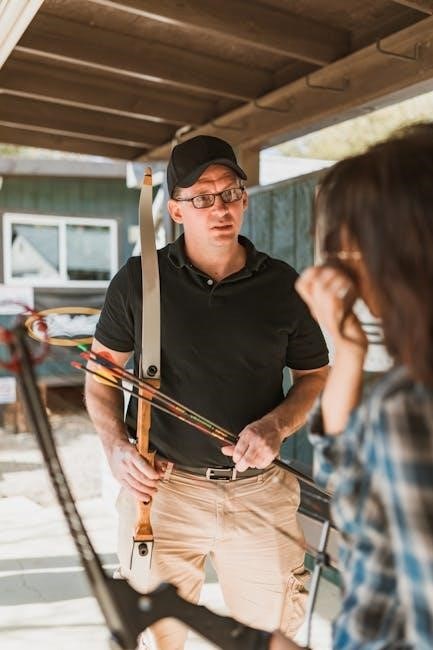GE Range LP Conversion Kit Instructions: A Comprehensive Guide

Converting your GE range from natural gas to liquid propane (LP) requires careful attention. This guide provides a comprehensive overview of the process. It includes essential safety precautions and step-by-step instructions. Follow the instructions carefully to ensure a safe and efficient conversion.
Many GE ranges come factory-set for natural gas. Converting to LP gas opens possibilities for homes without natural gas lines; LP conversion involves modifying the range’s components to safely and efficiently burn propane. This includes adjusting orifices and air shutter settings. A proper conversion is crucial to prevent gas leaks and ensure optimal performance.
A qualified technician should ideally perform the conversion. However, homeowners comfortable with appliance repair can do it themselves with care. It is important to follow instructions closely. A GE LP conversion kit is essential for this process. The kit contains the necessary parts and detailed instructions. This guide provides a step-by-step approach for a successful conversion.
This process covers cooktop burners, oven burners, and pressure regulators. The conversion will involve replacing orifices and adjusting flame settings. Safety is paramount, so always disconnect power and gas before starting. After the conversion, labeling the range as converted to LP gas is essential for future reference. This guide aims to provide the knowledge and instructions needed for a safe and effective LP conversion.

Identifying Your GE Range Model and Required Kit
Before starting any LP conversion, it is crucial to identify your specific GE range model. The model number is typically found on a label. This label is usually located on the range’s back, side, or inside the oven door. Once you locate the model number, you can determine the correct LP conversion kit.
GE makes several different LP conversion kits based on the range model. The operator’s manual usually lists the part number for your specific oven range. You can also contact GE Appliance Parts for assistance in identifying the correct kit. Providing them with your model number will ensure you get the right kit for your range.
Using the wrong kit can lead to improper conversion and potential safety hazards. A typical kit like the WB28K10556 includes orifices and detailed instructions. Confirming compatibility prevents issues during the conversion process. When in doubt, consult with a qualified technician or GE support. Make sure the kit includes all necessary components and clear instructions. This step is essential for a successful and safe LP conversion.
Safety Precautions Before Starting the Conversion
Prior to commencing any LP conversion work on your GE range, adhering to stringent safety measures is paramount. Begin by disconnecting the range from its power source. This will minimize the risk of electrical shock. Locate the circuit breaker or fuse box. Switch off the breaker or remove the fuse that corresponds to the range’s electrical circuit. Confirm power is disconnected before proceeding.
Next, shut off the gas supply to the range. The gas shut-off valve is typically located behind the range or near the gas supply line. Turn the valve to the “off” position. This action will prevent any gas leaks during the conversion process. Ensure adequate ventilation in the area where you will be working. Open windows and doors to allow for proper air circulation. This precaution will help dissipate any residual gas that may be present.
Never smoke or use open flames near the range during the conversion. Gas leaks are extremely dangerous and can cause explosions or fires. Keep a fire extinguisher readily available in case of emergency. If you detect a gas leak at any point, immediately evacuate the area and contact a qualified technician or the gas company.
Tools and Materials Needed for LP Conversion
Before initiating the LP conversion of your GE range, ensure you have all the necessary tools and materials readily available. A comprehensive LP conversion kit specific to your GE range model is essential. Verify the kit contains the correct orifices for both the cooktop burners and the oven burner. Adjustable wrenches are needed to disconnect and reconnect gas fittings.
A set of nut drivers, including sizes 1/4, 9/32, or 7mm, will be required to remove and install burner components. A Phillips head screwdriver and a flat-bladed screwdriver will be necessary for various adjustments and disassembly tasks. Pipe thread sealant, suitable for gas connections, is crucial to prevent leaks. A manometer or gas pressure gauge is needed to accurately measure and adjust the gas pressure.
Additionally, have soapy water solution and a brush available to check for gas leaks after completing the conversion. A permanent marker is useful for labeling the range. It will indicate that it has been converted to LP gas. A copy of the GE range’s service manual or the LP conversion kit instructions will provide detailed guidance throughout the process.
Step-by-Step Instructions: Cooktop Burner Conversion

Begin the cooktop burner conversion by disconnecting the GE range from its power source and shutting off the gas supply valve. Remove the cooktop grates, burner caps, and burner heads to expose the orifices. Using a nut driver, carefully remove the natural gas orifices from each burner.
Consult your LP conversion kit to identify the correct LP orifices for each burner size, as they may vary. Install the new LP orifices, ensuring they are securely tightened. Refer to the kit instructions for specific torque requirements, if provided. Some models may require adjusting the air shutter settings.
These adjustments control the air-to-fuel ratio. The instructions should guide you on the proper settings for LP gas. After installing all LP orifices and adjusting the air shutters, reassemble the burner heads, burner caps, and grates. Turn the gas supply back on and test each burner. Observe the flame characteristics. It should be blue and steady, without excessive yellow tipping.
Adjusting the Cooktop Burner Flames
After converting the cooktop burners to LP gas, fine-tuning the flame is essential for optimal performance. Light each burner individually and observe the flame characteristics. A properly adjusted LP flame should be blue with a small, steady inner cone.
If the flame is too high, yellow, or produces soot, it indicates an improper air-to-fuel ratio. Consult your LP conversion kit instructions to locate the air shutter adjustment screws on each burner. These screws control the amount of air mixing with the LP gas.
Use a small screwdriver to carefully adjust the air shutters. Open the shutters slightly to increase airflow or close them to decrease airflow. Make small adjustments and observe the flame after each adjustment. The goal is to achieve a clean, blue flame without any yellow tipping or soot production. If the flame is unstable or lifts off the burner, slightly close the air shutter until the flame stabilizes. Repeat this process for each burner until all cooktop flames are properly adjusted.

Step-by-Step Instructions: Oven Burner Conversion
Converting the oven burner to LP gas is a critical step in the conversion process. First, ensure the gas supply and electrical power to the range are disconnected. Locate the oven burner assembly, typically found at the bottom of the oven cavity. Remove any oven racks or obstructions to access the burner.
Consult your LP conversion kit instructions to identify the correct oven burner orifice for LP gas. Using a wrench or socket set, carefully remove the natural gas orifice from the burner assembly. Replace it with the LP gas orifice from the kit, ensuring it is securely tightened.
Next, locate the oven pressure regulator, usually situated at the rear of the range. Access the regulator and adjust it according to the LP conversion kit instructions. This adjustment ensures the correct gas pressure for LP operation. Once the orifice and pressure regulator are adjusted, reassemble the oven burner and restore the gas and electrical supply. Proceed to adjust the oven burner flame.
Adjusting the Oven Burner Flame
After converting the oven burner orifice to LP gas, adjusting the flame is crucial for efficient and safe operation. Turn on the oven and observe the burner flame. The ideal flame should be blue with a slight yellow tip. If the flame is mostly yellow or orange, it indicates incomplete combustion and requires adjustment. Locate the oven burner air shutter, a small adjustable plate near the burner.
Carefully adjust the air shutter opening to regulate the air-to-gas mixture. A larger opening increases airflow, while a smaller opening reduces it. Adjust in small increments, observing the flame after each adjustment. Continue adjusting until the flame is primarily blue with a slight yellow tip. If the flame is too blue and lifts off the burner, reduce the airflow.
Once the flame is properly adjusted, test the oven at different temperature settings to ensure consistent and even heating. If issues persist, re-check the orifice installation and pressure regulator adjustment according to the LP conversion kit instructions.
Adjusting the Pressure Regulator for LP Gas
Adjusting the pressure regulator is a critical step in converting your GE range to LP gas. The pressure regulator ensures that the correct gas pressure is delivered to the burners, which is essential for safe and efficient operation. Before starting, ensure that the gas supply is turned off. Locate the pressure regulator, usually found at the rear of the range.
The regulator will have an adjustable cap or screw. Remove the cap to access the adjustment mechanism. Most GE ranges use a spring-loaded adjustment. To increase the pressure for LP gas, you’ll need to adjust the spring tension. Refer to the LP conversion kit instructions for the specific adjustment procedure and recommended pressure settings for your range model. Use a manometer to measure the gas pressure while making adjustments.
Turn on the gas supply and check the pressure reading; Adjust the regulator until the pressure matches the specifications in the instructions. Once the pressure is correctly set, turn off the gas supply and replace the regulator cap securely. Test the range to ensure proper burner operation and flame characteristics.
Labeling the Range After LP Conversion
After completing the LP conversion of your GE range, proper labeling is essential for safety and future reference. The LP conversion kit typically includes a sticker or label indicating that the appliance has been converted to propane. This label must be affixed to the range in a visible location, often near the pressure regulator or on the back of the appliance.
The label should clearly state that the range is now configured for LP gas and include the date of conversion and the name of the person or organization that performed the conversion. This information helps prevent confusion and ensures that anyone working on the appliance in the future is aware of the gas type it is set up for. Additionally, retain the original natural gas orifices and components, storing them with the LP conversion kit instructions. This will be useful if you ever need to revert the range back to natural gas.
Proper labeling is a crucial step in ensuring the safe and correct operation of your GE range after LP conversion.
Troubleshooting Common LP Conversion Issues
After converting your GE range to LP gas, you might encounter some common issues. One frequent problem is uneven or yellow flames on the cooktop burners. This usually indicates an incorrect air-to-fuel mixture, requiring further adjustment of the air shutters. If the flames are too high or noisy, it could signal a problem with the pressure regulator, necessitating a check and adjustment.
Another common issue is a weak or inconsistent oven flame. This might be due to a partially blocked orifice or an improperly adjusted oven burner. Ensure the orifice is clean and the burner is correctly positioned. If you smell gas, immediately shut off the gas supply and contact a qualified technician to inspect for leaks. Also, double-check that all LP orifices have been correctly installed and tightened.
If problems persist, consult the LP conversion kit instructions or contact GE appliance support for assistance. Properly addressing these issues ensures safe and efficient operation of your LP-converted range.
Reverting Back to Natural Gas: A Reverse Conversion Guide
If you need to switch your GE range back from LP gas to natural gas, a reverse conversion is necessary. This process involves undoing the changes made during the LP conversion. Start by disconnecting the range from the power supply and shutting off the gas valve.
Next, replace the LP orifices with the original natural gas orifices. These are typically included in the LP conversion kit, so ensure you kept them. Reinstall the original pressure regulator settings as well. Adjust the air shutters on the cooktop burners to their natural gas positions, following the initial instructions in reverse.
For the oven burner, revert any adjustments made during the LP conversion. After completing these steps, carefully inspect all connections for leaks using a gas leak detector or soapy water solution. Finally, relabel the range to indicate it is now configured for natural gas. If unsure, consult a qualified technician.
